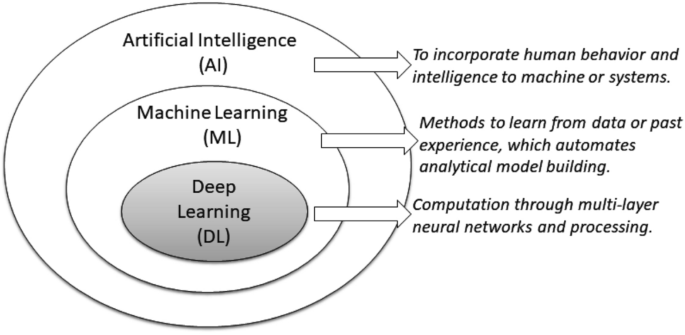Deep learning, a subset of machine learning that mimics the workings of the human brain, process data and creating patterns for use in decision-making.
It has a broad range of use cases across various industries. Here are some detailed examples of how deep learning is applied, specifically utilizing Convolutional Neural Networks (CNNs) and Recurrent Neural Networks (RNNs):
Convolutional Neural Networks (CNNs)
1. Medical Diagnostics: CNNs are used to diagnose diseases from scanned images by identifying patterns similar to how humans do, making it possible to recognize anomalies like tumors or fractures.
2. Brand Perception in Marketing: Analyzing social media images and videos to gauge brand visibility and perception.
3. Quality Control in Production: Identifying defective products on assembly lines by analyzing images for flaws.
4. AI-powered Cancer Detection: Enhancing the accuracy of recognizing cancerous cells or anomalies in medical images.
5. Military Surveillance: The Pentagon utilizes drones equipped with CNN-based AI algorithms and computer vision to identify potential hostile activities by analyzing images.
6. Autonomous Navigation and Surveillance: For navigating difficult terrain in mining operations and for autonomous vehicles like drones and ships to navigate and perform tasks without human intervention.
7. Defence Logistics: Combining deep learning and machine learning for predictive maintenance of military assets, like F-35 bombers, by analyzing sensor data.
8. Lethal Autonomous Weapons System (LAWS): Using CNNs to identify targets automatically and engage without human intervention.
Recurrent Neural Networks (RNNs)
1. Natural Language Processing (NLP): Devices like Alexa and Google Assistant use RNNs for understanding and processing human speech.
2. Video Conferencing: Differentiating between human faces and backgrounds to apply effects like blurring the background.
3. Autonomous Vehicles: ALVINN, an early autonomous driving algorithm, uses RNNs to follow roads by interpreting sequential sensor data.
4. Voice and Language Translation: Defense applications use RNNs to translate voice and dialogue in real-time, understanding patterns in streams of data.
Combining CNNs and RNNs
1. Surveillance Technologies: For analyzing videos, where identifying objects (using CNNs) and understanding their motion over time (using RNNs) are crucial.
2. Autonomous Navigation in Defense: For tasks like sea navigation, where understanding static images and making decisions based on sequential data are both important.
3. Patient Diagnostics: AI-powered systems classify medical images and recognize specific features, such as lesions, nodules, and organs, for accurate diagnoses.
4. Automotive Features: Technologies like park assistance use deep learning to interpret the environment and assist drivers.
These examples demonstrate the wide applicability of deep learning technologies in transforming industries by providing solutions that were not possible with traditional programming methods. From healthcare to autonomous vehicles, marketing, production, and defense, deep learning's capability to process and analyze vast amounts of data in complex ways is driving innovation and efficiency across the board.
#DeepLearning, #CNN, #RNN, #MedicalDiagnostics, #BrandPerception, #QualityControl, #CancerDetection, #MilitarySurveillance, #AutonomousNavigation, #DefenceLogistics, #LAWS, #NLP, #VideoConferencing, #AutonomousVehicles, #LanguageTranslation, #PatientDiagnostics, #AutomotiveFeatures, #AIInnovation

 2024-05-03 05:15:44
2024-05-03 05:15:44